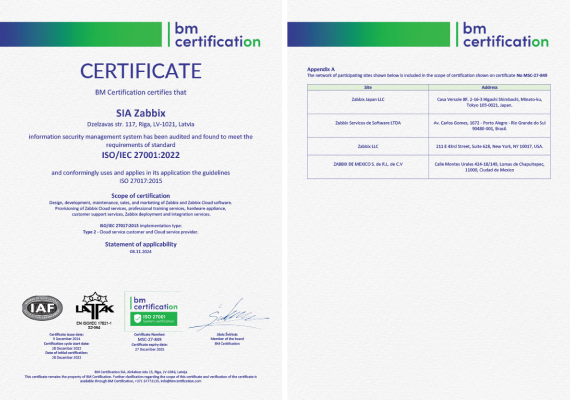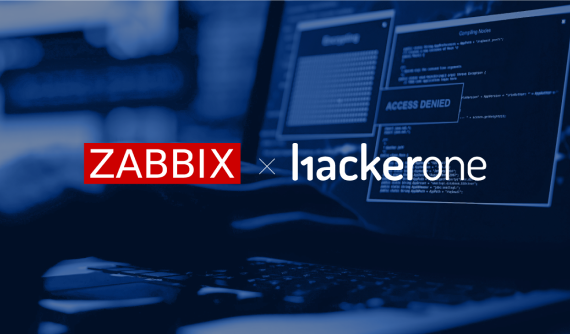Certifications
To assure our customers that Zabbix is a well-managed and professional organization, that appropriate information security measures are applied as necessary, and that customers can trust the source code, our professional services, and our Zabbix Cloud service, Zabbix has:
- Implemented a security program consistent with and conforming to the ISO/IEC 27001:2022 standard for Information Security Management
- Implemented the ISO/IEC 27017:2015 extension for cloud security controls
- Used other cybersecurity best practices to compliment the standard


